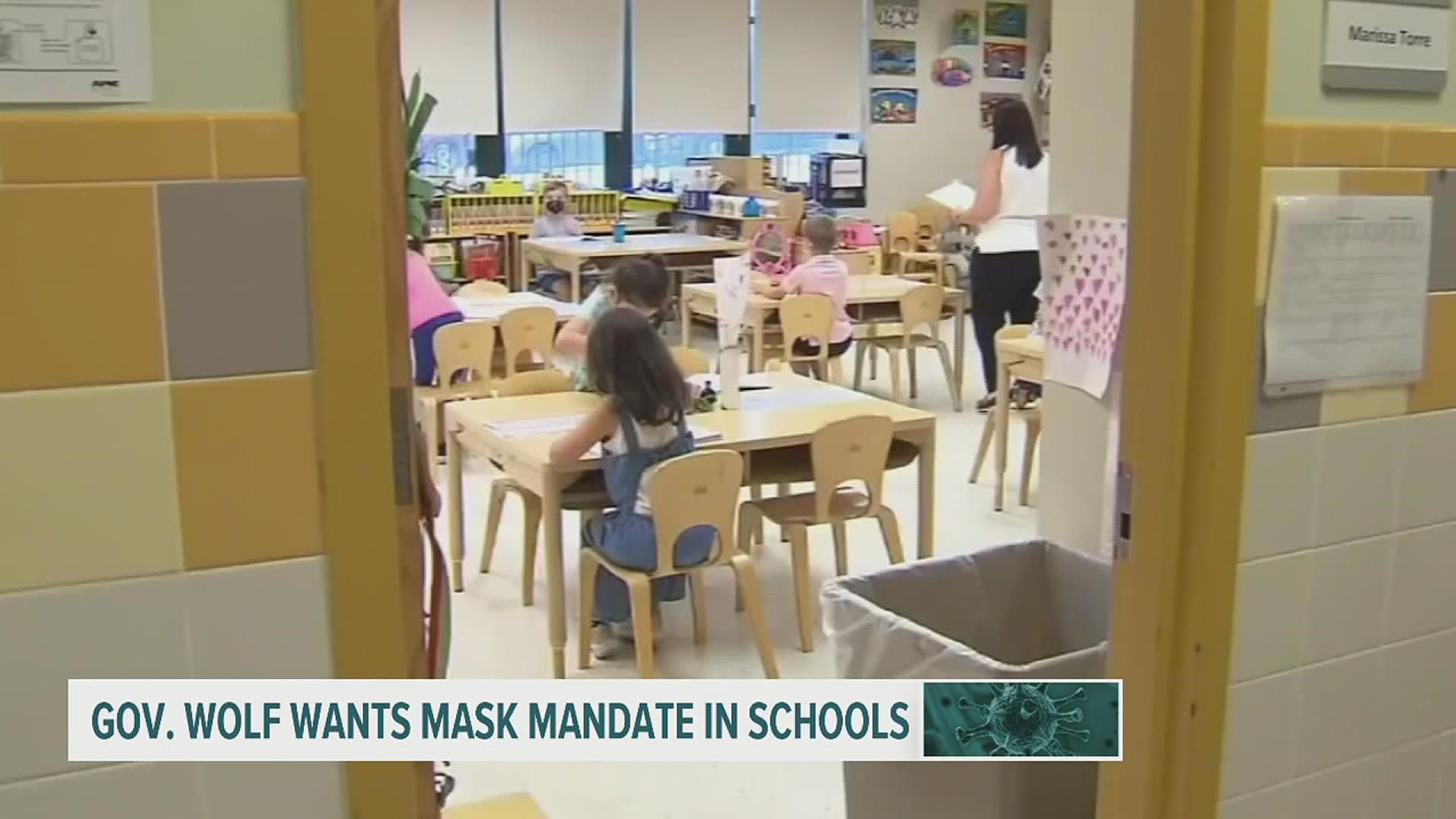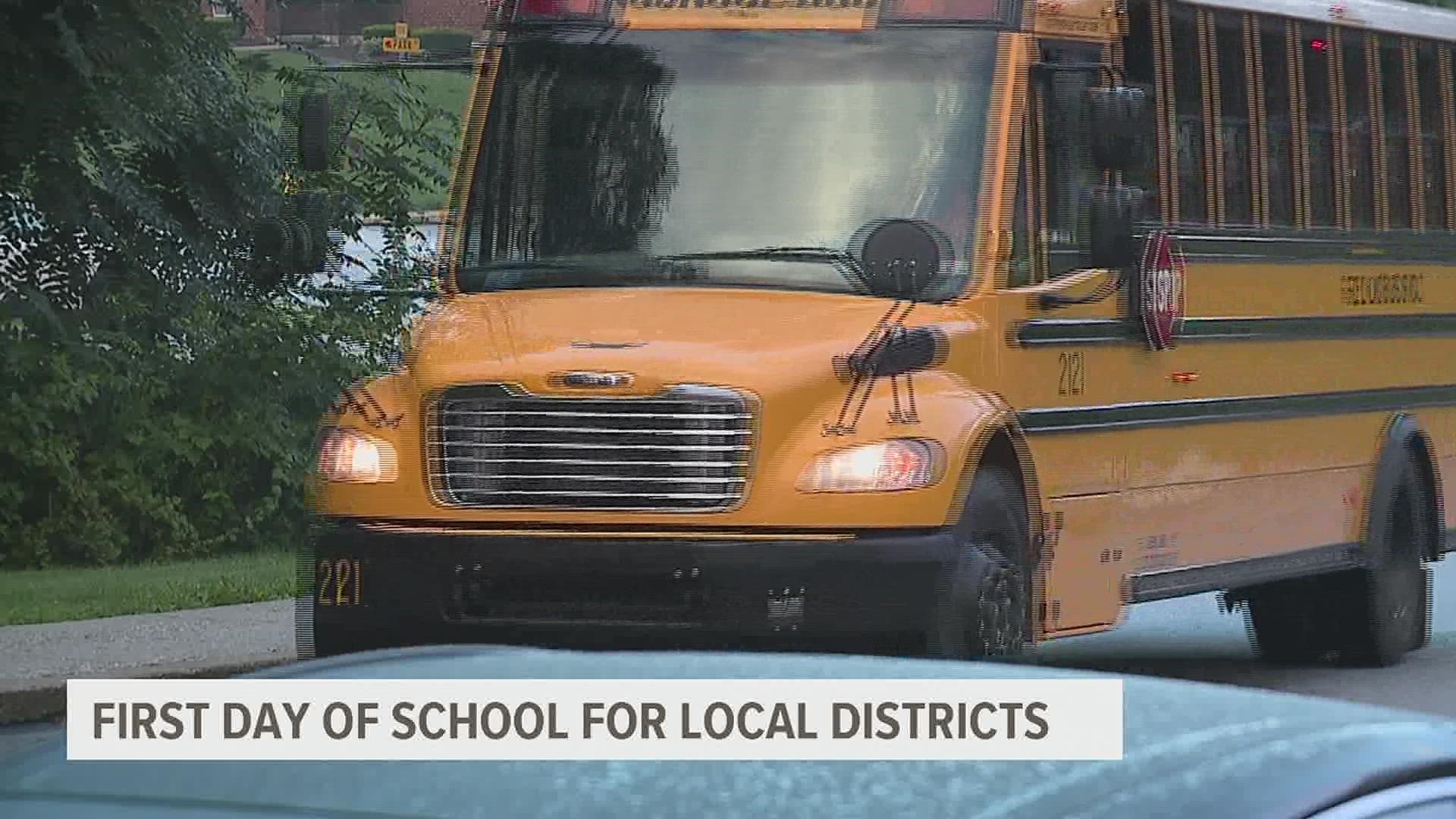PENNSYLVANIA, USA — Editor's note: The above video is from Aug. 25.
Pennsylvania school leaders are figuring out how to use billions in federal coronavirus relief, a flood of cash that can help lower class sizes, underwrite construction projects, and assist children in catching up after a year and a half of educational disruption.
“It's a game changer for us,” said Brian Polito, superintendent of Erie City Schools, which recently finished a three-year process of long-term planning, including projected facilities upgrades. “This is really helping us jump start those plans and put them in motion.”
Erie, with more than 10,000 students, received the state’s fifth-largest allocation, more than $97 million, or some $9,300 per student.
The district plans to cut elementary school class sizes from about 25 to 20 or fewer, expand summer enrichment programs, provide more tutoring and grow a pilot program that has placed “blended case managers" — essentially social workers — inside five schools.
Erie also plans to spend about $47 million to upgrade buildings and other infrastructure. “Getting all that work done in just a few years is going to be a challenge,” Polito said.
Since March 2020, the federal government has provided $190 billion in pandemic aid to schools — including nearly $7 billion for Pennsylvania — an amount that is more than four times what the U.S. Education Department spends on K-12 schools in a typical year. The Associated Press, relying on data published or provided by states and the federal government, tallied how much money was granted to nearly every school district in the country.
The AP tracked more than $155 billion sent to states to distribute among schools since last year, including general pandemic relief that some states shared with their schools. Some districts will receive sums amounting to 50% or more of the cost to operate their schools for a year.
The aid averages nearly $2,800 per student, but it varies widely by district and state, according to the AP’s analysis. Districts in Louisiana and the District of Columbia averaged more than $2,100 per student, for example, while those in Utah received a little more than $400. Nationwide, high-poverty areas received much more under the funding formula.
The latest and largest round of funding, totaling $123 billion, is still being distributed and gives schools enormous flexibility in how to spend it. While 20% must be used to address learning setbacks, the rest can be used on nearly any cost school officials deem “reasonable and necessary.” Schools have three years to spend the latest round, a window that many district officials say is tight for such a large amount of money.
In Pennsylvania, the largest cities collected the most in federal pandemic relief money, with the 130,000-student Philadelphia public schools receiving nearly $1.8 billion, or 10 times more than any other district.
Most of the Pennsylvania money in the most recent round was allocated to schools to make them safer and to prevent staff layoffs. About half of the rest, or $250 million, was designated under a state law passed in June to help students who have lost periods of learning time to catch up and to help address COVID-19 related social, emotional and mental health needs.
The state-directed spending also included $50 million to build afterschool programs and $50 million to establish or expand summer programs for children disproportionately affected by the pandemic.
“Every additional dollar that's going to our schools, whether it's federal or state, is needed,” said state Budget Secretary Greg Thall, noting that more well-heeled districts are better equipped to apply for the money. “There is a real capacity issue of districts that are struggling to supply education to their students.”
Upper Darby School District in Drexel Hill is gathering input but has a daunting list of challenges to address among its more than 12,000 students, including about 2,500 in special education and about 1,000 who are learning English. Upper Darby students speak 80 languages.
Upper Darby is expanding summer programs, offering teachers incentives to work over the summer and improving its heating and air conditioning systems. Upper Darby is in line to receive about $56 million.
“It’s only one-time money; obviously, we we’re going to be carefully deciding how we’re going to spend those dollars, so we don’t run into a sustainability issue,” said Ed Marshaleck, assistant superintendent of student services.
Commonwealth Charter Academy, where enrollment has boomed to 19,200 students, is getting more than $64 million. Spokesperson Tim Eller said the influx will be largely directed toward helping students catch up — it's not unusual for students to be two or three years below grade level when they enroll with the cyber school. About 55% of their students are low-income, Eller said.
Many Pennsylvania schools lack air conditioning or have air handling systems that are a couple decades old and in need of maintenance or repair, said Mark DiRocco, executive director of the Pennsylvania Association of School Administrators.
“This is the first legitimate source of funding that they've had in 11, 12 years that will allow them to really upgrade buildings so they're cleaner, they're more fuel efficient” and have better air quality, DiRocco said.
There's also a real need for mental health support for students, said Chris Lilienthal with the Pennsylvania State Education Association, the state's largest teachers union.
“It's much harder for students to excel when they're dealing with mental and emotional health issues,” he said.
Hannah Barrick, who is helping coordinate coronavirus relief matters as a special assistant to Pennsylvania's state education secretary, said many districts are currently working on their plans for the money.
“This is something we have never gone through before,” Barrick said. “Folks are really taking their time, really thinking it through and trying to be very strategic about the needs of their students and sort of the time constraints and sustainability and the fiscal cliff,” she said. “As we're going forward, we're certainly answering a lot of questions.”


